As a young artist, I loved discovering the world of drawing. It was magical to turn a blank page into a whimsical creature. The fox became one of my favorites to draw. Drawing a fox easy drawing is rewarding, filled with joy and mastering a new skill.
In this guide, I’ll show you how to draw a cute fox easy drawing. We’ll start with reference images and sketching ideas. Then, we’ll refine details and add colors. You’ll learn to draw a fox that will amaze everyone.
Let’s start this fox drawing tutorial. We’ll learn to draw a simple fox that captures its essence. With a few steps and creativity, you’ll become a fox drawing master in no time.
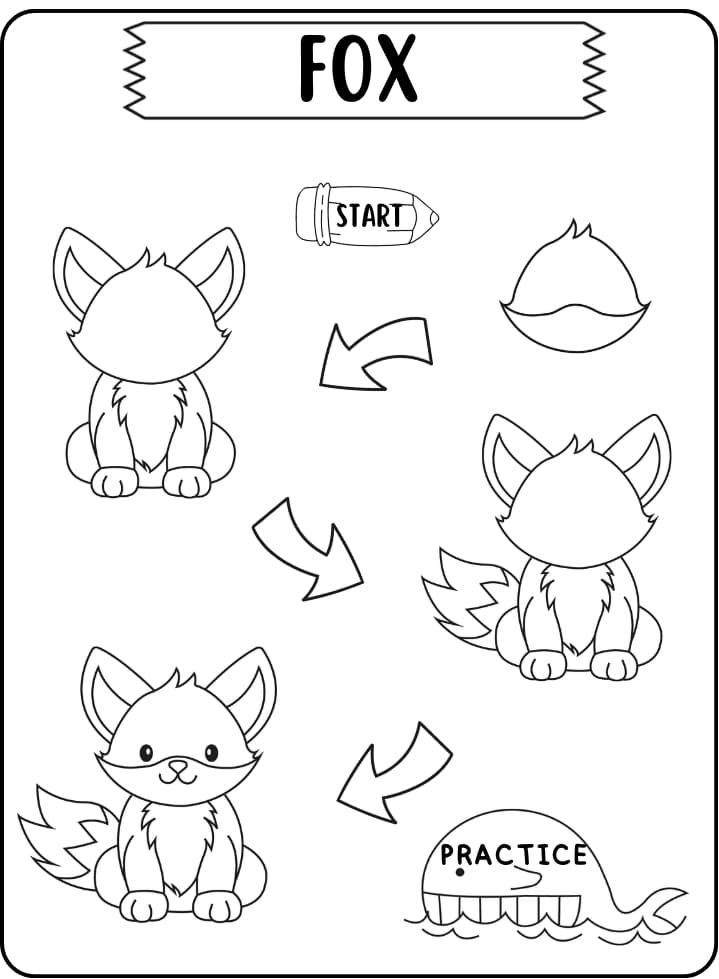
Gathering Reference Images for Your Fox Drawing
Before you start drawing your fox, it’s key to collect reference images. Look for photos of real foxes in different poses and angles. This will help you get the animal’s unique features and size right. You can find these online, in books, or by taking your own photos if you can.
Having many fox images will make your drawing look real and lifelike. Look for fox reference images, fox drawing reference, and search for finding fox photos or collecting fox pictures. These fox imagery resources will help a lot as you sketch and refine your fox drawing.
| Image Dimensions | Image Resolution |
|---|---|
| 3200 x 2400 pixels | 300 dpi |
By studying and using these fox photos and fox drawing references, you’ll capture the details and expressions that make foxes special. This visual research will make your fox drawing both accurate and eye-catching.
Sketching Out Initial Fox Drawing Ideas
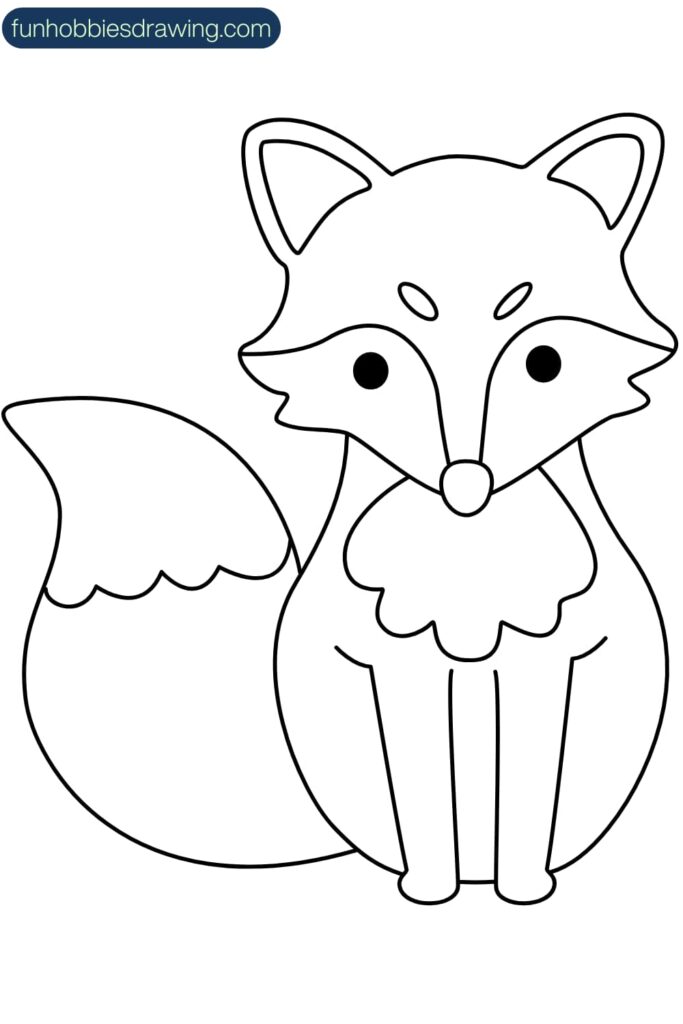
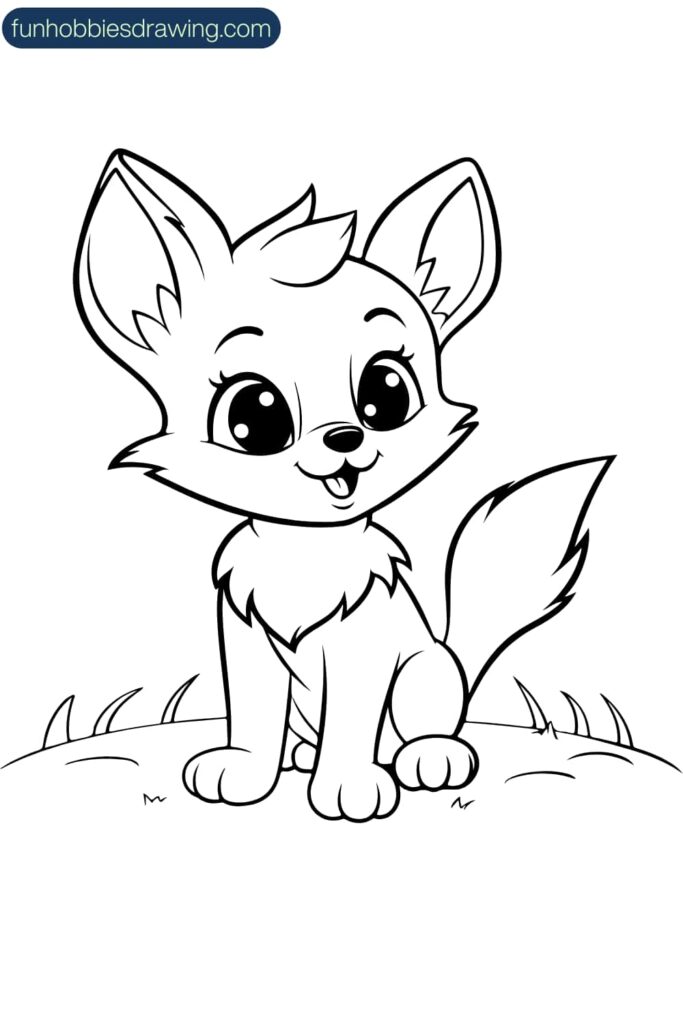

Now it’s time to start sketching out some initial ideas for your drawing. This is where the fun really begins. You get to let your creativity shine and explore different possibilities for your fox illustration.
Start by sketching a variety of fox poses and perspectives. Try drawing the fox from the front, side, and even overhead angles. Experiment with different body positions, from a regal sitting pose to a playful, mischievous stance. Don’t be afraid to rough out multiple sketches to see what works best.
In addition to the overall pose, think about the fox’s surroundings and composition. You could draw the fox against a simple background, or incorporate elements like trees, rocks, or other natural features. Play around with the placement of the fox within the frame, playing with different focal points and negative space.
Remember, this is the brainstorming stage, so don’t worry about perfection. Focus on sketching out your ideas quickly and freely. Jot down notes about the elements you like or want to explore further. The goal is to develop a strong foundation for your final fox drawing by trying out various sketching fox drawings, brainstorming fox ideas, and planning fox illustrations.
Once you’ve explored a variety of fox sketch concepts and rough fox drawings, you can start to refine your favorite ideas and develop a more polished drawing. This creative process will help you create a truly captivating and unique fox drawing.
Outlining the Basic Shape of the Fox
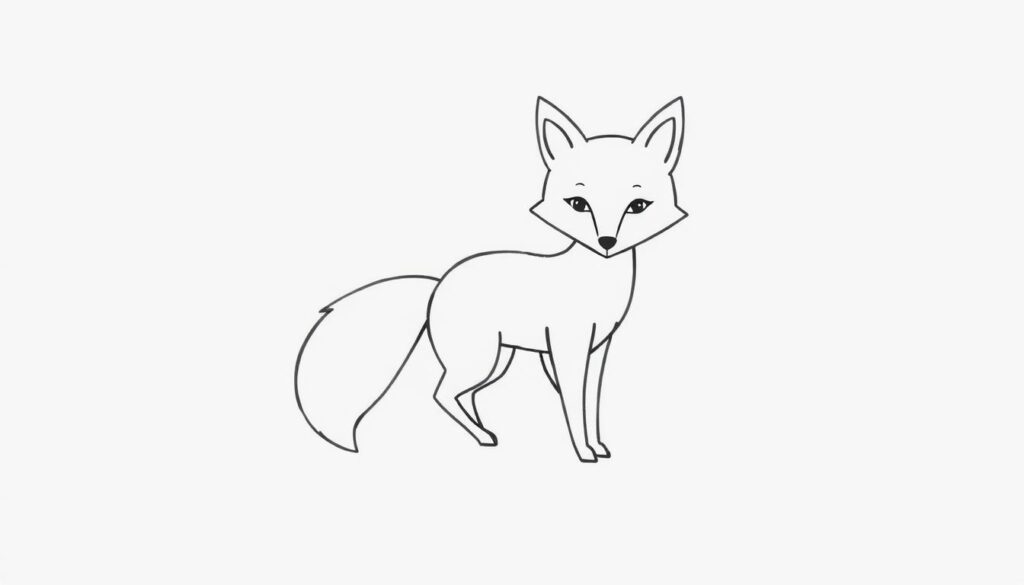
Now, let’s start outlining the fox’s basic shape. Begin with simple shapes and add details later. Sketch a large, tilted egg for the head. Then, draw two smaller eggs for the ears, placing them at 12 and 3 o’clock.
Next, draw an oval for the body, right below the near ear. Sketch three pairs of ovals for the legs and feet, evenly spaced at the body’s bottom. Finish with a cloud or bean-shaped tail at the back.
This outline is the base for your fox drawing. Keep your lines light and smooth as you sketch the fox silhouette and outline the basic fox structure.
Using these simple fox body shapes, you’ll create a well-proportioned fox illustration. Take your time and try different angles and poses when outlining the basic shape of the fox.
fox easy drawing
Now that the fox’s basic shape is drawn, it’s time to add more details. Start by making the tail, ears, and paws more defined. Add a curved “dent” at the head’s top for the muzzle. Then, draw a smiling mouth, a rounded nose, and expressive eyes.
Continue adding details and use a pen or marker to make the lines permanent. This step will give your fox a clean, finished look. Don’t forget to erase any extra pencil marks for a polished finish.
When drawing a fox, getting the proportions right is key. Knowing how big the head is compared to the body is important. Tutorials often stress the need for correct body proportions, like the body’s length and the head’s shape.
Artists should focus on the fox’s facial features, ears, nose, mouth, and eyes. These details help capture the fox’s essence. By following these steps, you’ll create a beautiful simple fox sketch or beginner fox illustration. Keep practicing, and your fox drawing steps will improve with each try.
Refining the Fox Drawing Details
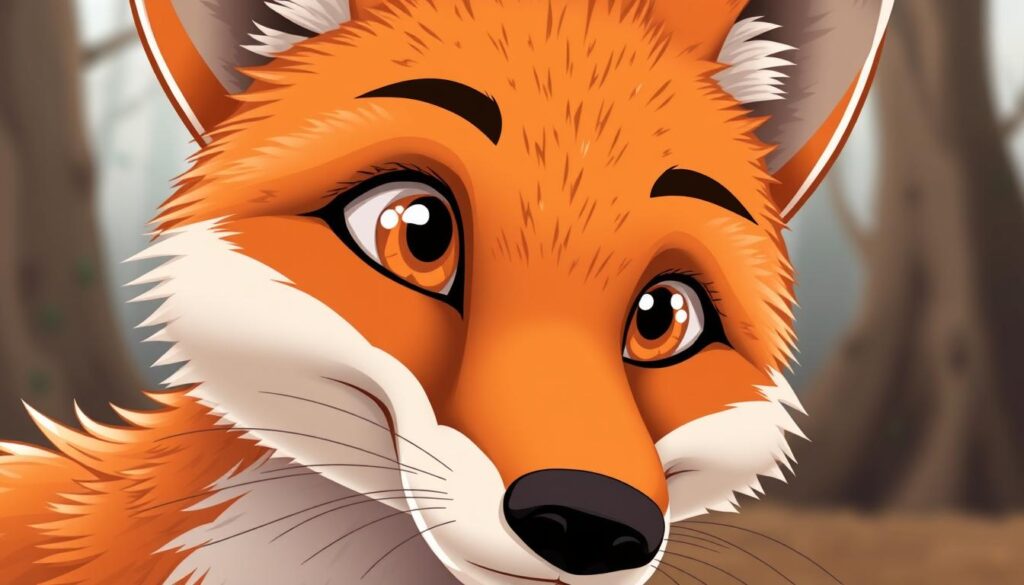
Now that you’ve got the basic shape and first details of your fox drawing, it’s time to make it even better. This is where you can really bring your fox to life with careful attention to the small details.
Start by adding more detail to the fox’s features. Make the tail curvy and fluffy, the legs muscular, and the face more lifelike. Look at your reference images to make sure you’re getting the fox’s proportions right. This will make your drawing look more polished and professional.
Don’t hesitate to add small touches that will make your illustration stand out. Things like textured fur, whiskers, and realistic paw pads can make a big difference. These details can help perfect your fox drawing and make it come alive on the page.
Keep working on the details until you’re happy with how your fox looks. The more time you spend on it, the more lifelike and captivating your final drawing will be.
With patience and dedication, you can add all the fox details and refine the features to create a truly amazing fox illustration. Keep practicing, and soon you’ll be a pro at making fox drawings even better.
Inking the Final Outline of the Fox

Once you’ve made your fox drawing detailed, it’s time to use permanent ink. Start by going over the main lines and features with a pen or marker. This will make your drawing stand out with a bold outline.
Be careful and precise when inking the final outline of the fox. Take your time to get smooth, consistent lines. These lines should follow the fox’s shape well. This step is key for finalizing your fox sketch and making it look professional.
After inking, erase any pencil lines left. This will give you a sharp, permanent fox illustration ready for more. With the inking fox drawings done, you can now add depth and color to your artwork.
Adding Depth with Sections and Patterns
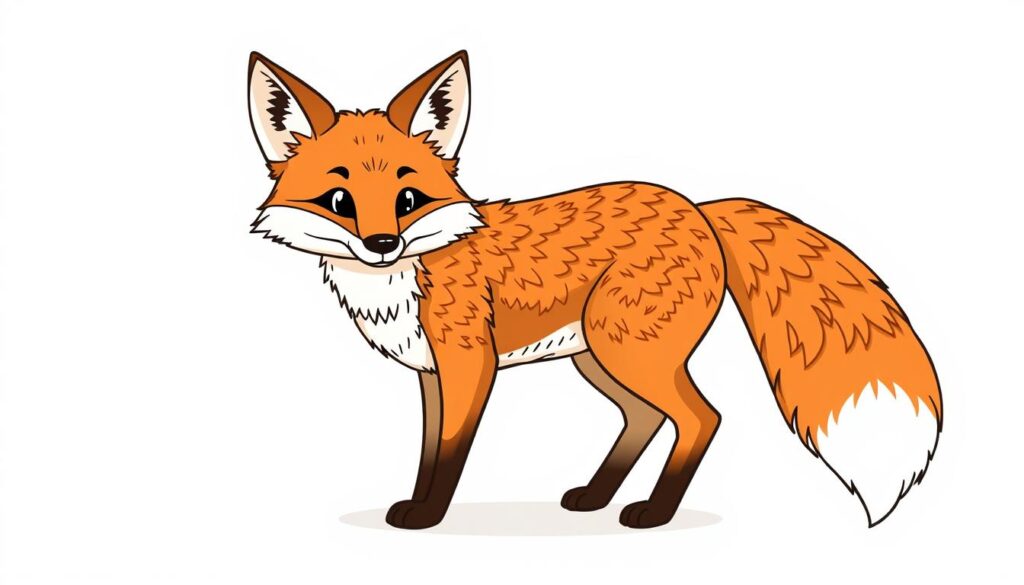
To add depth to your fox drawing, try using sections and patterns. Shade different body parts to mimic fur. This makes each part of the fox look unique. Use hatching, crosshatching, and stippling to add texture and depth to the fur.
Focus on details like the face, paws, and tail. These small parts can make your fox drawing really pop. With practice, you’ll master adding depth and dimension to your fox illustrations.
To add depth, focus on the fox’s body sections. Break it down into the head, neck, body, legs, and tail. Then, use hatching, crosshatching, and stippling to add texture and depth to each section.
Shading and patterning each part creates a sense of depth and volume. Pay attention to how you transition between sections. Use light and dark shades to mimic fur. With practice, your fox illustrations will come alive with depth and character.
Coloring and Shading Your Fox Drawing
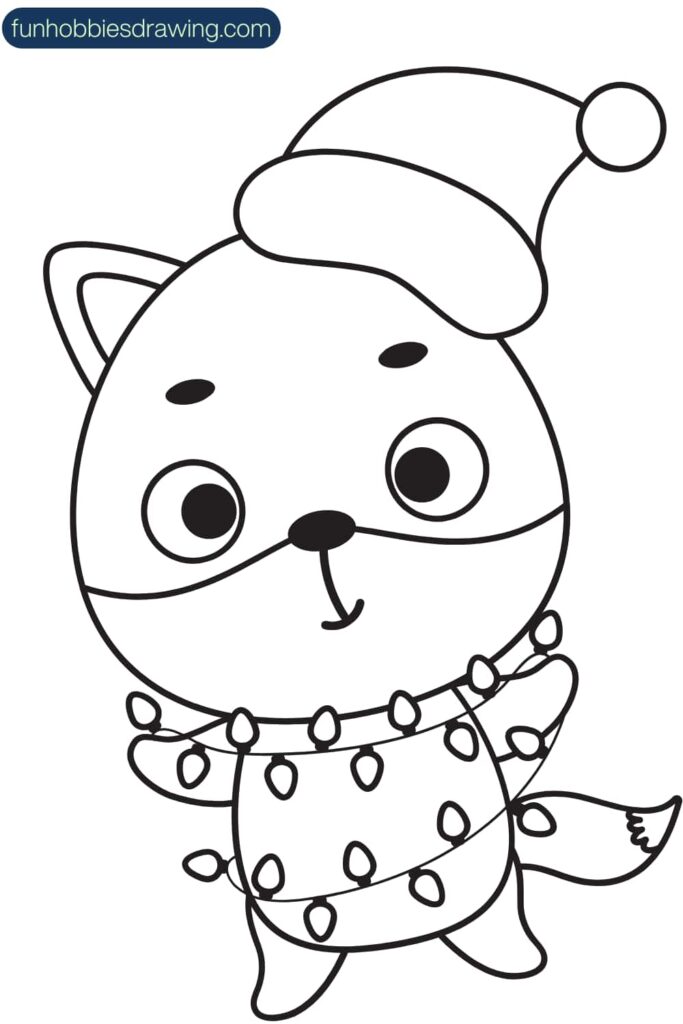
The last step in making your fox drawing is to add color and shading. You can choose a classic “burnt orange” for the fox’s coat or try different shades of red, orange, and brown. Use colored pencils or markers to blend colors and get smooth transitions.
Make sure to add lighter areas on the chest, muzzle, lower legs, and paws. This will give your fox depth and realism. With the right color choices and shading techniques, your fox will come alive. Whether you’re painting fox illustrations or using color in fox drawings, focus on the fox’s unique features and fur patterns.
Shading fox art takes time and practice, but it’s worth it. You’ll end up with a vibrant, lifelike drawing to be proud of. So, grab your colored pencils or paints and start making your coloring fox drawings even better.
Tips for Drawing Foxes in Different Poses


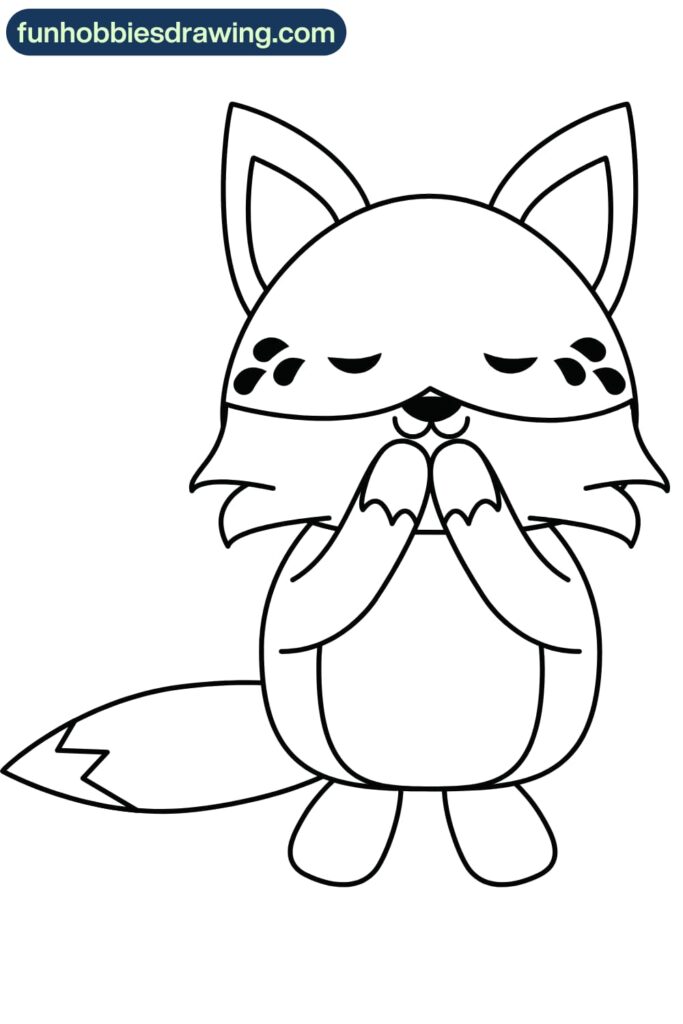
Learning to draw foxes is more than just the basic sitting or standing poses. To really capture their essence, try drawing them in action. This could be while they’re running, jumping, or pouncing. It’s a great way to show off their agility and grace.
Don’t be afraid to experiment with different angles when drawing foxes. Try looking down on them or up at them. Notice how their body, legs, and tail change in these poses. Use your reference images to make sure everything looks right.
| Pose | Key Details | Suggested Techniques |
|---|---|---|
| Running | Elongated body, stretched legs, tail extended for balance | Sketch quick, dynamic line work to convey motion; emphasize the weight shift and tension in the muscles |
| Leaping | Powerful hindquarters, front legs reaching forward, tail raised for stability | Capture the fox in mid-air, with a focus on the shapes and angles of the body; use bold, fluid strokes |
| Pouncing | Crouched stance, ears perked, legs ready to spring, tail low for balance | Emphasize the tension and concentration in the fox’s expression and pose; use sharp, defined lines |
By learning to draw foxes in different poses, your illustrations will become more lively and engaging. You’ll be able to show off the true spirit and movement of these amazing animals.
Practicing Fox Drawings to Improve Skills
The key to becoming a skilled fox artist is regular fox drawing practice. Set aside time to sketch foxes from both life and photographic references. Try different materials, techniques, and styles. Challenge yourself to draw the same fox in multiple poses or from various perspectives.
Over time, you’ll understand fox anatomy better. You’ll be able to capture their unique features with more confidence and precision.
Don’t be discouraged by early attempts – keep practicing, and your fox drawings will only get better and better. Engaging in a series of fox drawing exercises can greatly enhance your creativity and mastery of the subject. Remember, art and drawing are learnable skills that improve with dedicated practice, so approach your fox drawing practice with a positive mindset and a willingness to explore.
Whether you’re a beginner or an experienced artist, regularly honing your fox illustration skills will lead to impressive results. Stay focused, have fun, and watch your fox drawings evolve with each session. With patience and persistence, you’ll be well on your way to mastering the art of depicting these captivating creatures.
